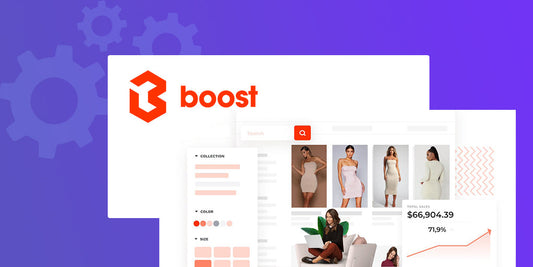Table of Contents
Get useful eCommerce stuff
Many Shopify brands focus on Conversion Rate (CR) as a key performance indicator, and rightly so—it’s a critical metric for understanding how well your store converts visitors into buyers. At Blend Commerce, we know that improving CRO can significantly impact your revenue and overall business performance.
However, while Conversion Rate Optimisation (CRO) is essential, it’s not the only factor that determines your long-term success. By focusing solely on CR, you might miss out on opportunities to increase profitability and customer loyalty through other key metrics like Customer Lifetime Value (CLV) and Customer Value Optimisation (CVO).
Why CRO is a Vital Metric for eCommerce
There’s no denying that Conversion Rate plays a crucial role in your eCommerce strategy. A well-optimised site that converts visitors into customers more effectively can result in immediate revenue gains. With CRO Audits, you can identify key areas where user experience and site performance improvements can lead to higher conversions.
Through A/B testing and continual optimisation, you can make incremental gains that increase your Conversion Rate over time. This approach is at the heart of our CRO Program, where we systematically improve CR by testing different site elements and tracking the impact on your sales.

But the story doesn’t end with Conversion Rate.
Why You Need to Look Beyond CRO: The Bigger Picture
While CRO is undeniably important, focusing solely on boosting conversions may not always capture the full potential of your store. To truly grow your eCommerce business sustainably, you need to understand how other key metrics—like Average Order Value (AOV), Customer Lifetime Value (CLV), and Purchase Frequency—can drive profitability over the long term.
That’s why we encourage a holistic approach that incorporates CRO with CVO techniques, as we do in our CRO Plus Program. This broader approach ensures that you’re not just converting customers but maximising their value over time.
Key Metrics to Complement your CRO Efforts
Here are the critical metrics that, when paired with CRO, give you a complete picture of your eCommerce health:
1. Average Order Value (AOV)
Increasing AOV means that each customer is spending more during each transaction. When you optimise for AOV through upselling and cross-selling, you can make your customers more valuable without needing to acquire new ones.
Tools like Rebuy allow you to recommend relevant products based on user behaviour, helping increase the average order size. This complements your CRO efforts by ensuring that, while you're converting more customers, you're also increasing the value of each sale.

2. Customer Lifetime Value (CLV)
Customer Lifetime Value (CLV) measures the total value a customer brings to your business over their relationship with you. It’s a powerful metric because it tells you how profitable a customer is beyond the first sale.
Improving CLV can be achieved through personalisation, loyalty programs, and segmentation strategies—all areas we focus on in our CRO Plus Program. By integrating CLV optimisation with CRO, you’ll ensure that your hard-earned conversions turn into long-term, high-value relationships.
See how Blend achieved a 77% increase in Customer Lifetime Value for one of our clients.

3. Purchase Frequency
While CRO helps convert visitors into buyers, Purchase Frequency measures how often they come back to purchase again. Increasing purchase frequency is key to improving CLV and building a loyal customer base.
Using tools like Klaviyo to implement segmented email flows based on purchase behaviour ensures you keep customers engaged and returning to your store, boosting your overall revenue and CLV.
In this video, we walk through Purchase Frequency with some top tips on how to increase your customers Purchase Frequency.
4. Traffic Quality
Your Conversion Rate is directly impacted by the quality of traffic coming to your site. It’s not just about driving more visitors, but about bringing the right audience—those most likely to engage with your brand and become loyal customers.

By analysing your traffic sources and refining your acquisition strategy, you can improve the quality of your leads, which in turn, supports your CRO efforts.
5. Gross Margin
Gross Margin tells you how much revenue is left after you subtract the cost of goods sold. Even with a high Conversion Rate, if your margins are low, your profitability will be impacted.

Understanding your margins in conjunction with CRO helps ensure that you’re not just converting more customers, but converting them in a way that supports your bottom line.
Why These Metrics Matter Alongside CRO
The real value of eCommerce growth comes when you optimise CRO alongside other key metrics like CLV and AOV. When you look at the bigger picture, you can make more informed decisions about where to focus your efforts and how to allocate resources effectively.
CRO helps you boost immediate results, but pairing it with a longer-term focus on Customer Value Optimisation (CVO) can lead to sustainable growth by maximising the lifetime value of each customer.
Blend Commerce: Supporting Growth with CRO and CVO
At Blend Commerce, we understand the importance of CRO for short-term gains, which is why we offer our CRO Audits to identify areas for immediate improvement. Once we complete the audit, we offer two distinct paths:
- CRO Program: For brands looking to focus on incremental conversion improvements through A/B testing and data-driven insights.
- CRO Plus Program: For those wanting to take CRO further by incorporating Customer Value Optimisation (CVO) techniques, helping you boost Customer Lifetime Value and build long-term profitability.
By offering both programs, we ensure that your brand can grow both in terms of Conversion Rate and Customer Value.
Ready to take your Shopify store to the next level? Whether you're looking to improve your Conversion Rate or unlock the full potential of your customers with CRO Plus, our team at Blend Commerce is here to help you drive growth. Contact us today to discover how we can optimise your store for both short-term wins and long-term success!
About the author

Jade Bothma Marketing Strategist
Jade has a gift: her writing is both brilliantly clever and effortlessly funny. She's a Marketing Strategist who puts her all into every project, and it shows. Not just in the in-depth strategies she creates, but also in the extra effort she always gives, both to her team and clients. With her keen sense of humour and straight-to-the-point style, Jade truly makes our team shine and our content stands out. Beyond her talent, it's her genuine kindness and unwavering dedication that endears her to everyone. In many ways, she's the heartbeat of our team, bringing life and laughter to everything she touches.
Get useful eCommerce stuff



